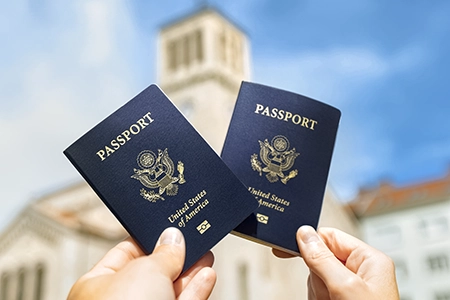Introduction to Translation Rates
Translation is pivotal in bridging communication gaps across cultures and nations in today’s globalized world. It is absolutely essential for businesses to expand into new markets by adapting their products and services to different languages, ensuring that messages resonate culturally and linguistically with diverse audiences. Translation is not merely converting words from one language to another; it’s about accurately conveying ideas, emotions, and intentions, fostering understanding and cooperation. In diplomacy, education, and international relations, translation is crucial for sharing knowledge, fostering international collaborations, and maintaining global peace and security. It undeniably empowers individuals by providing access to information and services in their native languages, promoting inclusivity and equal opportunities. Overall, translation is an indispensable tool in a connected world, facilitating global commerce, cultural exchange, and mutual understanding among people of different linguistic backgrounds.
In this article, we aim to provide a clear understanding of translation rates and the factors that determine them. Our goal is to help clients seeking translation services and translators themselves by offering insights into pricing models and how language pairs, complexity, and technology affect costs. We aim to equip the audience with the knowledge to make informed decisions in a globally connected world, ensuring a balance between cost-efficiency and high-quality translation outcomes.

Before we begin…
Looking for superior translation services that are fast, precise, and budget-friendly? Look no further! We offer top-notch translation solutions at unbeatable rates. Contact us now to get a quote and let us help you communicate effectively in any language.
Basics of Translation Rates
Definition of Translation Rates
Translation rates are the fees translators or agencies charge for converting written content from one language to another. These rates represent the cost associated with the service of translating documents, websites, and other materials. The pricing reflects the direct translation task and encompasses the expertise, research, and time the translator invests. It’s important to understand that these rates can vary significantly based on numerous factors, including the language pair, document complexity, and the translator’s experience. Translation rates are more than just a simple transaction; they represent the value of ensuring accurate and culturally appropriate communication across different languages.
How Translation Rates are Presented
Translation rates are typically presented in three main formats: per word, per hour, or per page. Per word pricing is the most common, especially suitable for large text volumes, offering transparency and ease in calculating costs. Per hour rates are often applied to projects that require extensive research or specialist knowledge, such as technical, legal, or creative translations, reflecting the time and expertise needed. Lastly, per page rates are used for documents with standardized formats, like legal contracts or certificates. This method simplifies the billing process, particularly for documents where word count varies significantly per page. Each pricing model caters to different project types and preferences, providing flexibility in how translation services are charged.
Per Word Pricing Model
The most common pricing model in the translation industry is the per-word model. It is preferred because of its transparency and simple calculation method. Under this pricing model, the translator or agency charges a fixed rate for each word translated. This approach works best for extensive projects that involve a lot of text, such as manuals, website content, and long reports. The per-word rate can vary depending on factors such as the text’s complexity, the language pair’s rarity, and the translator’s expertise. Clients find this model convenient because it is predictable, making it easier to budget and estimate costs before the project starts. This pricing model also encourages efficiency and clarity in the translation process, as both the translator and client have a clear understanding of the project’s scope and cost from the outset.
Per Hour Pricing Model
The per-hour pricing model is commonly used for projects that require extensive research, specialized knowledge, or creative input. This approach works best for fields such as legal, medical, technical, or marketing translations. Translators charge a fixed hourly rate, reflecting the time and expertise invested in the project. The per-hour model is ideal for tasks where the word count does not accurately represent the effort involved, such as editing, proofreading, or working with complex or highly technical documents. The hourly rate factors in the translator’s professionalism, experience, and work quality, ensuring that clients who need detailed, specialized translations are adequately compensated for the translator’s expertise and the time they dedicate to the project.
Per Page Pricing Model
The per-page pricing model is commonly used for documents with a standard format, such as legal documents, certificates, or academic papers. In this model, translators charge a fixed price for every page translated, regardless of the word count. This approach is particularly useful for documents with a uniform layout and a predictable amount of text per page. It simplifies the billing process for both the client and the translator, especially in cases where the word count per page might vary significantly. This model is beneficial when dealing with official documents that require notarization or certification, as it provides a straightforward way to estimate costs. Clients who have documents with consistent formatting and structure often prefer the per-page model for its simplicity and ease of cost calculation.
Factors Affecting Translation Rates
Understanding the various elements that influence translation rates requires a thorough analysis. These factors include the language pair involved, the content’s complexity and specialisation, the project’s urgency, and the translator’s experience and expertise. Each aspect is crucial in determining the final cost of translation services. This section will delve into these key factors, providing insights into how they affect pricing and what clients and translators should consider when discussing rates for a translation project.
Language Pair
The combination of languages involved significantly influences the translation rates. The more common language pairs, such as English-Spanish or English-French, usually compete more among translators, resulting in more affordable rates. On the other hand, the less common language pairs like English-Icelandic or English-Swahili tend to command higher prices due to a limited number of qualified translators. The demand and supply dynamics of specific language pairs greatly influence the cost of translation. Furthermore, some languages are inherently more complex to translate due to their unique scripts, cultural nuances, or other factors, which can also affect the pricing.
Complexity and Specialisation
Determining the translation rates depends on the subject matter and complexity of the content. Generally, simple texts like business correspondence or website content require less expertise. Therefore, They are priced lower than specialised texts such as legal, medical, or technical documents. Specialised translations require translators with specific industry knowledge, expertise, and, often, certifications. This specific knowledge ensures accuracy and appropriateness in the translated material, which is particularly crucial in fields where errors can have significant consequences. Therefore, translations requiring specialised knowledge tend to be priced higher to reflect the additional skill and effort involved.
Turnaround Time
When it comes to translation pricing, urgency plays a crucial role. You may have to pay higher rates if you have a tight deadline because the translation service provider will need extra effort and resources to meet the timeframe. Rush jobs may require translators to work outside their regular hours or prioritise a particular project over others, which justifies an additional premium. However, it’s important to balance urgency with quality, as excessively quick turnarounds may affect the accuracy of the translation. Clients that require fast translations should be prepared to pay higher costs that compensate for the expedited service.
Translator’s Expertise and Experience
The translator’s qualifications and experience significantly influence the translation services’ pricing. Translators who are highly experienced, possess advanced degrees and certifications or specialise in a particular field generally charge higher rates for their services. Their expertise ensures a high level of accuracy and quality in the translation and enables them to work more efficiently. Experienced translators bring a deep understanding of language and culture, which can be vital for specific types of texts. Their rates reflect their professional background, skills, and the added value they bring to the translation process, ensuring that the final product meets the highest standards.
Regional Variations in Translation Rates
Translation pricing can vary significantly across different regions. Various factors, including local demand, cost of living, and the availability of skilled translators, influence this variation. For example, rates in areas with a high concentration of translators and lower living costs may be more competitive than regions with fewer professionals and higher living expenses.
However, it’s crucial to remember that lower rates indicate lower quality. While choosing the most cost-effective option may be tempting, especially when considering translation services from lower-cost regions, it’s important to manage expectations regarding the quality of such translations. High-quality translations require linguistic expertise, cultural understanding, and attention to detail, all typically reflected in the price.
Clients who expect translations that accurately convey the intended message and tone should be cautious of significantly lower rates, as these may not meet the high standards required for professional and accurate translations.
Understanding the Value of Quality in Translation
Translation is more than just changing words from one language to another; it involves preserving the original content’s essence, tone, and subtleties. This section emphasizes the significance of quality in translation and the correlation between the cost and the standard of translation services.
Balancing Cost and Quality
Translation services are a crucial aspect of global communication, but like most things, you get what you pay for. While it might be tempting to choose a cheaper service, it can result in translations that are not accurate, culturally insensitive, or technically incorrect. On the other hand, high-quality translations require extensive research, meticulous attention to detail, and a thorough understanding of both the source and target languages. These factors are especially vital in fields such as law, medicine, or technology, where accuracy is paramount. Though it’s essential to stay within budget, it’s equally important to consider the consequences of subpar translations on personal or business goals.
The Merit of Investing in Higher Rates
Investing in high-quality translation services often results in more accurate translations. Skilled and experienced translators charge a higher rate for their services. Still, they justify it with their expertise, credentials, and proven track record of delivering high-quality work. These professionals invest in continuous learning to stay updated with linguistic changes and cultural nuances, significantly enhancing their translations’ quality. A higher rate also means that a translator can allocate more time and resources to each project, ensuring a thorough review process and accuracy. In situations where precision and quality are essential, such as legal documents, technical manuals, or marketing materials for a global audience, investing in a higher translation rate is not just a choice but necessary to achieve the desired outcome and maintain professional credibility.
Tips for Clients: How to Navigate Translation Rates
Clients often find it challenging to navigate translation rates, especially when they are new to procuring translation services. Understanding how to get the best value for money while ensuring high-quality results is crucial. Here are some tips to help clients make informed decisions and effectively manage their translation projects.
Seeking the Best Value for Money
- Research and Compare: When receiving quotes from different translators or agencies, take time to research and compare rates. Keep in mind that the cheapest option may not provide the best quality.
- Understand Rate Structures: Familiarise yourself with the different pricing models available (per word, per hour, per page) and consider the most suitable for your project.
- Look for Specialisation: If your project is specialised, consider hiring translators with relevant expertise. Although they may charge more, their specialised skills can provide better value in the long run.
- Consider the Total Cost: Consider any extra costs, such as rush fees or revision charges, when budgeting.
Importance of Clear Communication and Project Scope
- Define Your Needs Clearly: When requesting a translation, provide a detailed brief including the target audience, tone, and document purpose.
- Discuss Expectations: When communicating expectations, clearly state turnaround time, format, and specific requirements to prevent misunderstandings and added costs.
- Understand the Process: Familiarising yourself with the translation process can help you effectively plan and manage the project by understanding each stage.
- Establish a Good Relationship: Developing a positive working relationship with your translator or agency can result in better understanding and collaboration, leading to potential improvement in both cost-effectiveness and quality over time.
Final Word
This blog post delved into the complex world of translation rates, highlighting the need to understand the various factors influencing them. These factors include language pairs, project complexity, translator expertise, and regional variations, all of which significantly determine the cost of translation services. We have emphasized that investing in higher rates often leads to superior, more accurate translations. To obtain the best value for their money, clients must navigate these rates with a well-informed perspective, clear communication, and a thorough understanding of the project scope. On the other hand, translators must set fair and competitive rates reflective of their skills and experience to maintain their professional integrity and sustainability in the industry. Ultimately, a mutual appreciation of the value of quality translation work and fair pricing benefits all parties involved and contributes to successful, effective cross-cultural communication in our increasingly globalized world.
By adhering to these guidelines, you can navigate the intricate realm of translation rates and ensure you receive high-quality translations that provide excellent value for your investment. Clear communication and a comprehensive grasp of the project’s scope are crucial components of this process.



